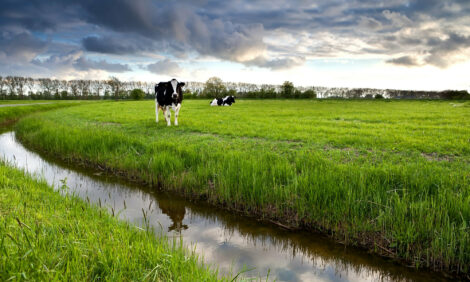



Call to Curb Slaughter Without Prior Stunning
UK - The slaughter of animals for commercial meat supply without stunning them first should at the very least be curbed, if not banned, concludes a former president of the British Veterinary Association (BVA) in an opinion piece in this week's Veterinary Record.There has been a steady rise in the number of animals killed in this way over the past decade, the available data suggest, according to Professor Bill Reilly.
UK and EU legislation allow for the slitting of animals’ throats without prior stunning to enable Muslims and Jews to meet the dietary requirements of their faiths, but with the caveat that it must not cause “unnecessary suffering”.
But it does, says Professor Reilly, pointing to the findings of both the former Animal Welfare Council (FAWC) and the EU–funded Dialrel Project, which encouraged dialogue among 11 countries on issues of religious slaughter.
FAWC concluded that: “Such a massive injury would result in very significant pain and distress” before an animal lost consciousness, and said the practice was “unacceptable”.
The Dialrel Project report drew similar conclusions, based on the fact that the throat is rich in nerve endings.
These findings can be easily verified in films posted on YouTube, which “clearly demonstrate the pain and distress of obviously still sentient animals after non-stun slaughter,” adds Professor Reilly.
An estimated two million animals, mostly poultry, are killed without stunning for the orthodox Jewish community (Schecita), while Halal meat now accounts for 25 per cent of the entire UK meat market, with anecdotal evidence suggesting that almost half of lambs destined for slaughter are killed without prior stunning.
As these figures far exceed the proportions of religious communities with these dietary requirements, commercial factors may have played their part in this rise, suggests Professor Reilly. Abattoirs without stunning facilities may be cheaper to run and enjoy a marketing advantage, he says.
It means that “much of the meat from non-stunned animals ends up on the secular market," but if they knew the source, "most consumers would choose not to eat such meat,” he believes.
“In my view, the current situation is not acceptable and, if we cannot eliminate non-stunning, we need to keep it to the minimum,” he contends.
“This means restricting the use of Halal and Kosher meat to those communities that require it for their religious beliefs, and where possible, convincing them of the acceptability of the stunned alternatives,” he writes.
The principles applied to the use of animals in medical research – replace, reduce, and refine – could be similarly applied to slaughter without prior stunning, Professor Reilly ventures.
A tolerant society must respect the religious beliefs of different faiths, he emphasises. The challenge is to reconcile that with animal welfare, and ongoing dialogue is key, he says. This has been successfully achieved in New Zealand, which has a large Halal export market that requires all its animals to be stunned first, he says.
“I do not believe that there is any scientifically robust evidence to support the contention that non-stun slaughter has the welfare of the animal at its core,” he maintains. And in light of the forthcoming EU directive on the protection of animals at the time of killing, now is the time for UK vets to take a stand on the issue, Professor Reilly concludes.
TheCattleSite News Desk


